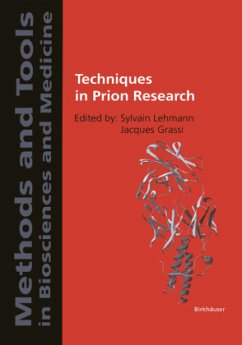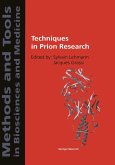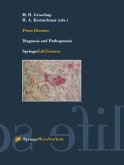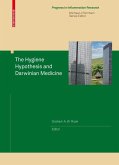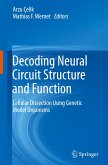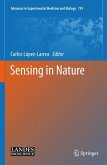Prion diseases, also known as Transmissible Spongiform Encephalopathies (TSEs), exist in both humans (Creutzfeldt-Jakob disease (CJD)) and animals (scrapie, bovine spongiform encephalopathy (BSE), chronic wasting disease) and have the unique property of being infectious, sporadic or genetic in origin.
Although the precise nature of the infectious agent responsible for TSEs is not definitely identified, it is now clearly demonstrated that a protein named PrP (for Prion Protein) plays a critical role in the transmission and pathogenesis of TSEs.
This book provides the general description as well as the details of the techniques currently used for the study of prion diseases. Taking into account the pivotal role played by PrP it is not surprising that many Chapters of this book deal with the purification, the detection and the characterization of the different forms of this protein. In addition, in vitro, cellular and animal models specifically adapted to the studyof TSEs, as well as bio-safety procedures are described. Each Chapter is written by scientists involved for many years in their respective domain of prion biology who give the best of their knowledge in this technical document. This volume is a very useful tool for any laboratory which recently decided to contribute to the study of TSEs as well as for teams already engaged in this field for many years but interested in extending their technical capacity toward new methods.
Features:
Purification of PrPC and the Pathological Isoform of Prion Protein (PrPsc or PrP-res)
Animal Models of TSEs
Cell Culture Models of TSEs
PrPsc Immunohistochemistry
Western Immunoblotting Techniques
Antibody Production and ELISA
TSE Strain Typing in Mice
Biosafety and Decontamination Procedures
Cell-free Conversion of Prion Proteins
Cytotoxicity of PrP Peptides
Cyclic Amplification of Prion Protein Misfolding<
Of interest to:
Researchers and clinicians in the fields of cell biology, biomedicine, neuroscience/neuropathology, veterinary medicine and biochemistry.
Hinweis: Dieser Artikel kann nur an eine deutsche Lieferadresse ausgeliefert werden.
Although the precise nature of the infectious agent responsible for TSEs is not definitely identified, it is now clearly demonstrated that a protein named PrP (for Prion Protein) plays a critical role in the transmission and pathogenesis of TSEs.
This book provides the general description as well as the details of the techniques currently used for the study of prion diseases. Taking into account the pivotal role played by PrP it is not surprising that many Chapters of this book deal with the purification, the detection and the characterization of the different forms of this protein. In addition, in vitro, cellular and animal models specifically adapted to the studyof TSEs, as well as bio-safety procedures are described. Each Chapter is written by scientists involved for many years in their respective domain of prion biology who give the best of their knowledge in this technical document. This volume is a very useful tool for any laboratory which recently decided to contribute to the study of TSEs as well as for teams already engaged in this field for many years but interested in extending their technical capacity toward new methods.
Features:
Purification of PrPC and the Pathological Isoform of Prion Protein (PrPsc or PrP-res)
Animal Models of TSEs
Cell Culture Models of TSEs
PrPsc Immunohistochemistry
Western Immunoblotting Techniques
Antibody Production and ELISA
TSE Strain Typing in Mice
Biosafety and Decontamination Procedures
Cell-free Conversion of Prion Proteins
Cytotoxicity of PrP Peptides
Cyclic Amplification of Prion Protein Misfolding<
Of interest to:
Researchers and clinicians in the fields of cell biology, biomedicine, neuroscience/neuropathology, veterinary medicine and biochemistry.
Hinweis: Dieser Artikel kann nur an eine deutsche Lieferadresse ausgeliefert werden.
This is an excellent book for the description of specific methods for use in TSE research. The reason why such a book is necessary is because around the world people have been using different methods frequently and it has become extremely difficult to repeat other researcher's methods. One of the reason has also been a determination by researchers not to supply samples or data to other researchers. However this book is like a breath of fresh air in all that with an extremely good description of how it should be done with everything from transmission systems to cell-free conversion of prion proteins laid out as complete systems. Remarkably some of the methods I would have expected to have been almost 'private' in that the researchers did not want other people to know the method...but not here! Clearly the editors, Sylvain Lehmann and Jacques Grassi had not let the writers miss things out and full systems are mapped out. Full marks to the editors and the writers in this one and an excellent book that should be in the hands of everyone in the field.
(http://www.priondata.org/data/A_book.htm)
(http://www.priondata.org/data/A_book.htm)

